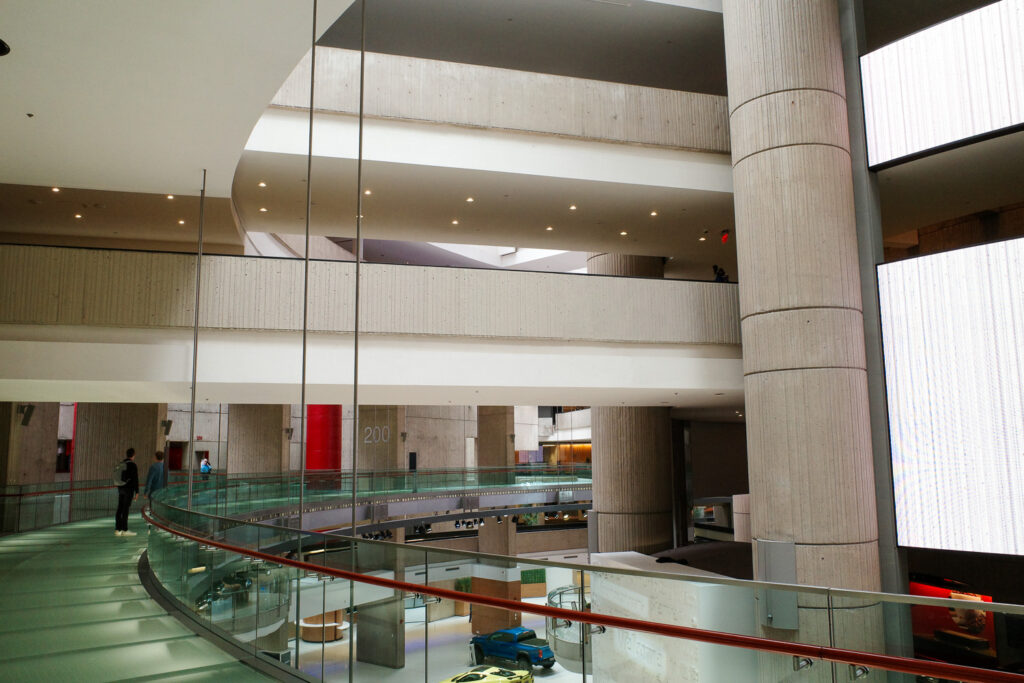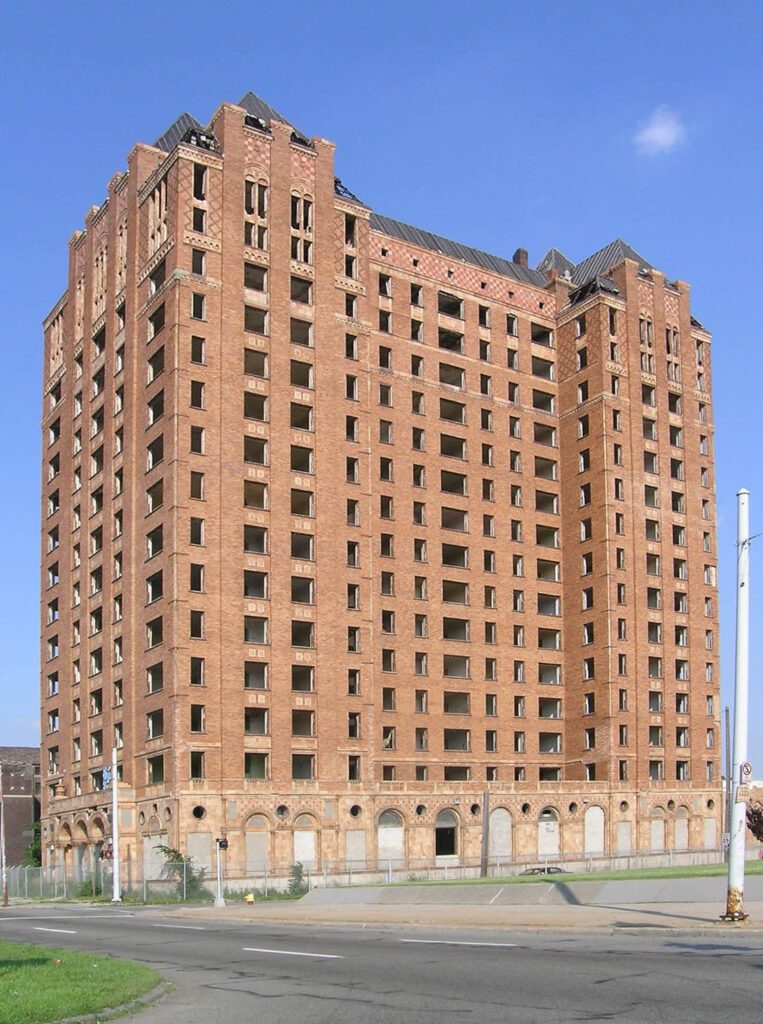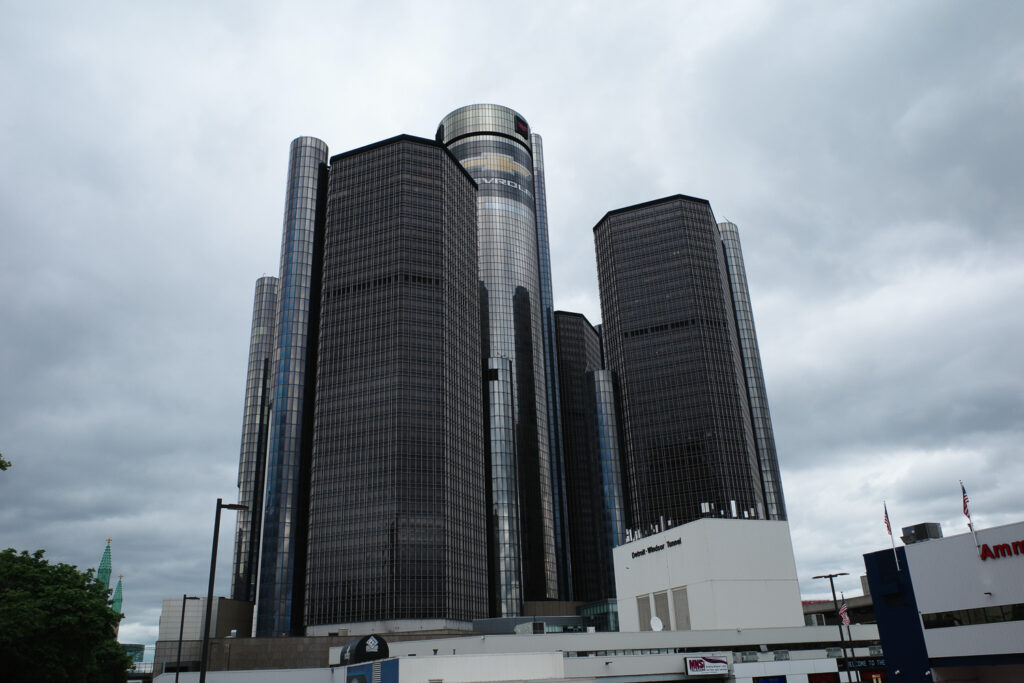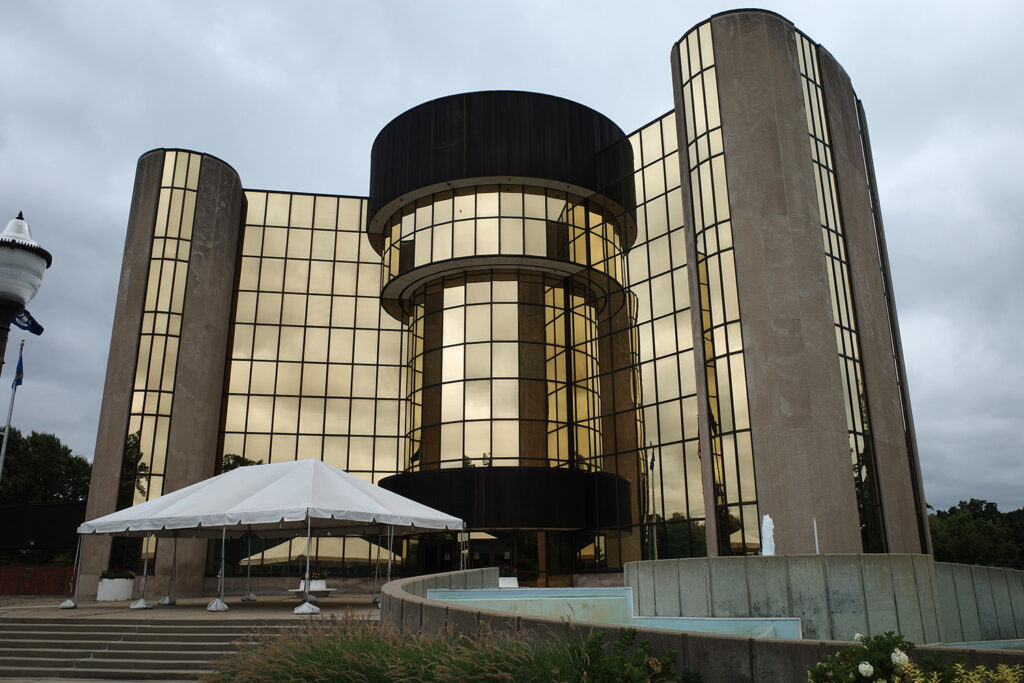In 1971, some titans of industry—the kind that universities name buildings and schools after—huddled together to figure out how to pull off a $1.8 billion project in today’s dollars.
This elite group of 40 blue-chip individuals and businesses outlined a plan to finance a visionary development they called The Renaissance Project. They included high-profile personalities: Ford Motor Chairman Henry Ford II, American Motors Chairman Roy Chapin, Jr., shopping-mall visionary A. Alfred Taubman, and Hudson’s President Joseph Hudson Jr.
Notably, they executed the project without using a penny of taxpayer money.
“Social reform is not our task,” they said in a 1971 advertisement in the Detroit Free Press. “We are businessmen.”

In 2024, 60 years later, the current owners of what became known as the Renaissance Center came up with their own plan for what to do with the iconic seven-building campus.
Bedrock and General Motors proposed a $1.6 billion plan to revamp the RenCen, including tearing down two of the seven towers. But in a sign of the times, GM and Bedrock wanted taxpayers to pitch in $250 million.
Much has changed in the six decades the Renaissance Center created a Detroit skyline as iconic and recognizable as anything in the state. Over time, the expectations of deep-pocketed developers and mega corporations have changed. Taxpayers were now to be volunteered by politicians as silent financial backers of major developments.

In 2006, before he ran for governor, Rick Snyder chastised the Ann Arbor City Council during a January retreat. His complaint? He came to the city with millions of dollars with his venture capital company, and all he received in return from the city was a fruit basket.
Later, John Rakolta, Jr., chairman of Walbridge construction, looked out from his downtown Detroit office and upon the sprawling city. Rakolta ran one of the largest construction contractors in the country and does a lot of work in Detroit.
He was asked by a visitor in his office about corporate subsidies. Rakolta said he had brought millions of dollars into the downtown and provided jobs. Why shouldn’t he get a tax break?
It’s a fair question if everyone else is getting them.
Consider Detroit’s Lee Plaza, built in 1929 and named after builder Ralph Lee. It was called “the finest thing of its kind in America” and cost $46 million in today’s dollars.

Nearly a century later, it is being redeveloped as a mix of affordable housing for senior citizens and commercial residential units.
There are six different taxpayer-supported revenue streams dedicated to the project. Taxpayers are on the hook via a Low-Income Housing Tax Credit and grants from the Michigan State Housing Development Authority, federal Covid-19 pandemic funds from the city of Detroit, grants from the Michigan Legislature, and an alphabet soup of funding mechanisms soaked with taxpayer money—HUD, HOME, and CDBG funding from the city of Detroit, and rental subsidies from HUD.
Based on the public documents available on the Lee Plaza deal, Eric Lupher, president of the Citizens Research Council of Michigan, concluded “that this project probably cannot happen without government funding.”
Lupher said the city’s requirement that nine of the 17 floors be set aside for affordable housing and those artificially low rents would not be enough to make the project profitable for the developer without government aid.
The legacy media promotes corporate subsidies as a necessary part of attracting businesses under the guise of job creation or projected tax revenues that are erroneously believed to be irreplaceable.
I was a newspaper reporter in Ann Arbor in 2001 covering Pfizer when it negotiated a tax abatement deal that would save it $60 million in property taxes over 12 years in exchange for a proposed $800 million expansion of its campus in Ann Arbor. At that time, it was only the second tax abatement that the city had ever approved. David Canter, then a senior vice president for Pfizer, hinted in 2001 during negotiations the pharmaceutical company may leave Ann Arbor without the tax breaks.
I was still around when Pfizer did pull up stakes in 2007, taking all 3,000 employees and leaving Ann Arbor high and dry. The Ann Arbor newspaper dispatched reporters to do panic stories. What about the nonprofits that Pfizer so graciously supported? What about the businesses in which the Pfizer employees shopped? How would Ann Arbor survive?
How’s Ann Arbor doing now? The doom scenarios never materialized.
In 2001, Ann Arbor Mayor John Hieftje explained why he felt the city couldn’t turn down Pfizer.
“If we don’t do it, somebody else will,” Hieftje told his fellow city council members after the abatement was approved. “I think abatements are lousy, but we can’t solve this at little old Ann Arbor.”
Seventeen years later, Pfizer was granted a $32.1 million tax break for a facility in the city of Portage. That city’s mayor, Patricia Randall, told me in an email why she felt Pfizer couldn’t be turned down.
“I do know that other sites were considered and Portage cannot afford to gamble with its largest employer and largest taxpayer,” Randall wrote in an email. “It is important to remember that incentives are part of the decision matrix in our world today.”
In 1976, another mayor talked about landing a major development that would be key to his city’s prosperity. That was Detroit Mayor Coleman Young, who boasted about the expected completion of the Renaissance Center by the spring 1977.

Young wrote: “Renaissance Center is being financed completely by the investment of 51 ‘blue chip’ companies, the largest private investment group ever assembled in this country for a major real estate development.”
Tom Gantert is a contributing writer for Michigan Enjoyer.



